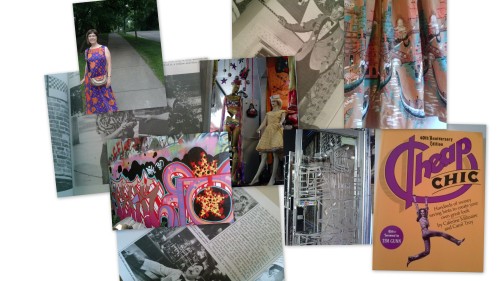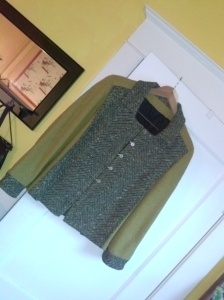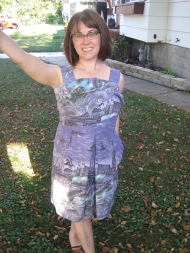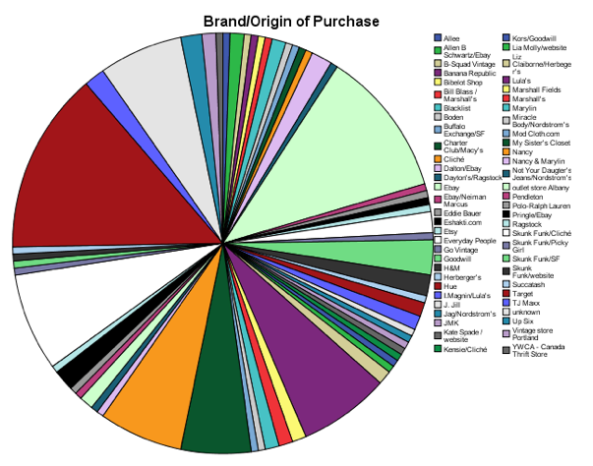
“All the leaves are brown, and the sky is gray……” Actually, the sky might be gray right now, but the leaves are a bright mix of green, yellow, orange, red and brown. This week, the telltale chill and crispness entered the breeze, signaling it’s truly fall. Here in Minnesota we have four distinct seasons dictated by the weather, and most inhabitants who are able shift what they wear with each season. Yes, we layer summer’s t-shirts, but the sundresses and tank tops vanish. Out come the long-sleeve t-shirts, sweaters, caps, jackets, scarves and darker colors.
Today I ushered my closet through its seasonal shift from summer to fall. I got up from breakfast, coffee in hand, feeling energetic and ready to undertake the task. I put on some music, bring out the storage containers and start sorting through what can be packed away and what will stay, awaiting supplemental layers. I will complete this task by lunch, and then move onto others on my to do list. This is the attitude with which I always begin a seasonal sorting of my closet – ready to go, resolved to efficiently undertake the task with enthusiasm.
And then I notice that it’s already 2:30, the cat is desperately trying to get my attention because I’ve forgotten his lunch. When I notice his cries, I realize I’ve been staring into space for 5 minutes, a heap of clothes piled over my arm. Where did the time go? Why am I unable to efficiently move forward and complete the task at hand?
It occurs to me that this has happened every single time – every season. It’s never as simple as putting away the sundresses and replacing them with sweaters. The sorting process is not as rational as establishing one pile for clothes that need repairs, others that need a wash, a third that will go to Goodwill.
Why does the seemingly simple process of sorting through my clothes become so emotionally fraught? As I contemplate my lost afternoon, I finally realize this is an inherently emotional task.
There are the moments of regret, when I think “What was I thinking? Why did I buy that?” These items are the easiest to dispose of, the offending item pulled off the hanger and into the pile for a local charity.
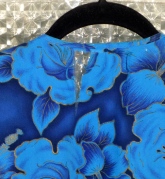
I get a deeper stab of regret and loss as I realize some garments are at the end of their “life cycle,” (at least in their current form). I ripped my beautiful blue Hawaii’ian shirt on a tree branch this summer – I don’t think I can repair it, so do I cut it apart and incorporate the fabric elsewhere? If I put it in the sewing room, will I be able to bring myself to take the scissors to the shirt? It now makes me a bit sad.
Sorting my clothes into different piles also leads me to occasionally hop aboard the guilt trip express. I encounter garments that represent failed aspirations. I intended to repair that dress, but here it hangs, in need of mending. This 1940s peplum jacket from Dayton’s still fits, but I’ve never had a skirt to match it; I’ve been intending to find or sew one since, well ………maybe 1986. 
And it hangs next to this blue silk swing jacket that I purchased in the late 80s because I loved that it had such a specific geographic location on the label, “Just Opposite the Taj Mahal Hotel, Bombay” Like the 40s peplum jacket, I have never been able to match the silk jacket. I don’t have the heart to give either jacket away; they are last two examples I have of the first vintage clothes I ever purchased. So here they remain, old friends that haven’t received their fair share of attention, still waiting for me to find them appropriate acquaintances so that we can all hang out together in public. 
And speaking of guilt, what do I do with gifts? Some clothes I acquired through the thoughtfulness of others but they really don’t fit that well or suit my tastes. Wouldn’t it be wrong to put them in the Goodwill pile? And what if gift-giver goes to Goodwill and sees it hanging there? I pack the item away for now, ensuring that I’ll be taking another little guilt trip in spring when I re-encounter this particular storage bin.
Sorting through my closet also leads to wistfulness. As I make my way through my closet, I inevitably encounter ghosts of bodies and selves past. The dashed hopes that one day I will lose enough weight to fit back into my beloved mod arrow dress. Even some of my newer clothes fit in all the right places a season or two ago, but now I must face that age and gravity have taken their toll.

Thankfully, not every emotion of entering the closet is negative. As I near the end of my task, things begin to look up. In storage bins, I rediscover favorites of my fall wardrobe and smile, as if encountering old friends who are dear to me and make me feel good when I’m in their presence. It is these familiars who now move to front and center, giving me a nod of reassurance whenever I open the closet door.
It’s almost late afternoon now, the laundry nearly done, the newly cleaned clothes that survived summer are now packed away. There’s a grocery bag full of items ready for a local charity shop. I’ve put my torn and stained clothes whose fabric I loved in my sewing room – perhaps I will learn to quilt and they will once again bring me a smile in a new form.
I sit with a cup of hot tea, looking out at the October gray sky, finally feeling emotionally settled, my closet encounter perhaps having helped me, for now, to come to terms with bodies and selves of times present.
– Nancy L. Fischer
photos by Nancy Fischer









